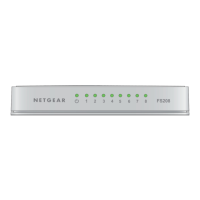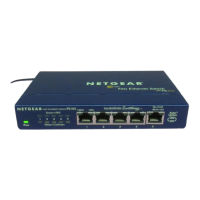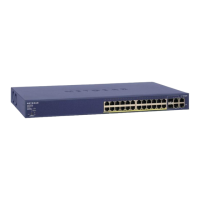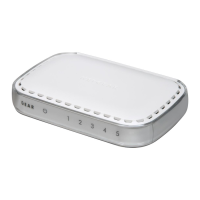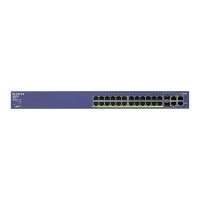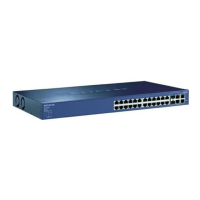Page 14 of 121
10/100 Mbps RJ-45 Ports
As Figures 2-1 and 2-3 shows, the FSM726S and FSM750S Managed Stackable Switch have either 24 or 48 10/100 Mbps RJ-45 ports. These
ports are auto-sensing 10/100 Mbps ports: When you insert a cable into an RJ-45 port, the switch automatically ascertains the maximum speed (10
or 100 Mbps) and duplex mode (half- or full-duplex) of the attached device. The 10/100 Mbps ports support only unshielded twisted-pair (UTP)
cable terminated with an 8-pin RJ-45 plug.
To simplify the procedure for attaching devices, all RJ-45 ports support Auto Uplink. This technology lets you attach devices to the RJ-45 ports
using either straight-through or crossover cables. When you insert a cable into the switch’s RJ-45 port, the switch automatically:
•
Senses whether the cable is a straight-through or crossover cable, and
• Determines whether the link to the attached device requires a “normal” connection (such as when connecting the port to a PC) or an
“uplink” connection (such as when connecting the port to a router, switch, or hub).
•
After ascertaining this information, the switch automatically configures the RJ-45 port to enable communications with the attached
device, without requiring user intervention. In this way, the Auto Uplink technology compensates for setting uplink connections, while
eliminating concern about whether to use crossover or straight-through cables when attaching devices.
Warning! You must use Link Aggregation (a.k.a. Port Trunking) to create multiple links between switches. Using Auto Uplink to create multiple
active paths between any two network devices can cause undesirable loops in the network, resulting in an endless broadcast traffic that disables
your network. Loops occur when there are alternate routes between two network devices. In Figure 2-3, for example, a loop is created by
connecting two RJ-45 ports on a NETGEAR Model FSM726S Managed Stackable Switch to a router containing a 4-port switch. The Spanning Tree
protocol will prevent loops, if that advanced feature is enabled.
Figure 2-5: Warning! Creating Redundant Paths between Network Devices
Gigabit Ethernet Ports (RJ-45 and GBIC module bay)
Your NETGEAR Model FSM726S and FSM750S Managed Stackable Switch have two Gigabit Ethernet ports that can be used as either a
1000BASE-T port or as a GBIC module bay. The default setting for those ports are for the built-in RJ-45 connector to be active, but they can be
independently configured to activate either the RJ-45 or the GBIC module, enabling multiple combinations of fiber and copper connections. The
Gigabit Ethernet ports provide a full-duplex 1000 Mbps (1 Gbps) connection that effectively doubles throughput to 2 Gbps.
The GBIC bay accommodates a standard GBIC module, such as the NETGEAR AGM721F 1000BASE-SX GBIC module. This module has an SC
connector that is compatible with the IEEE 802.3z 1000BASE-SX standard.

